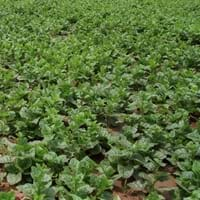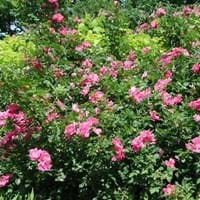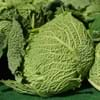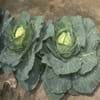Life Span
Perennial
Perennial
Origin
Southeastern Asia, India
Europe, Northern America, Northern Europe
Types
Red Malabar Spinach, Green Malabar Spinach
Not Available
Habitat
Hot climate regions, Humid climates
shores, Shores of rivers or lakes
USDA Hardiness Zone
Not Available
9-10
Sunset Zone
H1, H2, 3a, 3b, 4, 5, 6, 7, 8, 9, 10, 11, 12, 13, 14, 15, 16, 17, 18, 19, 20, 21, 22, 23, 24
7, 8, 9, 12, 13, 14, 15, 16, 17, 18, 19, 20, 21, 22, 23, 24
Habit
Vining/Climbing
Spreading
Flower Color
Red, Green, Orange Red
Baby Pink, Not Available, Pink, Red
Flower Color Modifier
Bicolor
Not Available
Fruit Color
White, Ivory
Not Available
Leaf Color in Spring
Green, Light Green
Green
Leaf Color in Summer
Green, Dark Green
Green
Leaf Color in Fall
Purple, Gray Green
Green
Leaf Color in Winter
Purple, Gray Green
Green
Leaf Shape
Heart-shaped
Elliptic
Plant Season
Spring, Summer, Fall, Winter
Spring, Summer
Sunlight
Full Sun, Partial Sun, Partial shade
Full Sun, Partial Sun
Type of Soil
Clay, Loam
Clay, Loam, Sand
The pH of Soil
Neutral
Acidic, Neutral
Soil Drainage
Well drained
Well drained
Bloom Time
Not Available
Early Spring, Spring, Late Spring
Tolerances
Drought
Drought
Where to Plant?
Ground
Container, Ground, Pot
How to Plant?
Leaf Cutting, Seedlings
Seedlings
Plant Maintenance
Medium
Medium
Watering Requirements
Do not let dry out between waterings, Requires consistently moist soil
occasional watering once established
In Summer
Average Water
Lots of watering
In Spring
Moderate
Moderate
In Winter
Average Water
Average Water
Soil pH
Neutral
Acidic, Neutral
Soil Type
Clay, Loam
Clay, Loam, Sand
Soil Drainage Capacity
Well drained
Well drained
Sun Exposure
Full Sun, Partial Sun, Partial shade
Full Sun, Partial Sun
Pruning
Remove damaged leaves, Remove dead leaves
Remove damaged leaves, Remove dead branches, Remove dead leaves
Fertilizers
Nitrogen
Doesn't require fertilization when grown in rich soil
Pests and Diseases
Aphids
Botrytis Blight, Powdery mildew, Sooty Mold, Verticillium Wilt
Plant Tolerance
Drought
Drought
Flower Petal Number
Single
Single
Fragrant Bark/Stem
No
Yes
Foliage Texture
Medium
Medium
Foliage Sheen
Glossy
Matte
Invasive
Sometimes
Sometimes
Attracts
Not Available
Hummingbirds, Butterflies
Allergy
Not Available
no allergic reactions
Aesthetic Uses
Not Used For Aesthetic Purpose
Showy Purposes
Beauty Benefits
Not Available
Perfumes
Environmental Uses
Air purification
Air purification
Medicinal Uses
Folate, Iron, Low calories, Low Fats, Rich in Potassium, ß-carotene, Vitamin A, Vitamin C
No Medicinal Use
Part of Plant Used
Leaves
Whole plant
Other Uses
Used As Food
Oil is used for aromatherapy, Used as Ornamental plant
Used As Indoor Plant
No
No
Used As Outdoor Plant
Yes
Yes
Garden Design
Container, Edible, Groundcover, Herb / Vegetable, Tropical, Vine
Foundation, Mixed Border
Botanical Name
BASELLA alba
Rosa rugosa
Common Name
Ceylon Spinach, Malabar Spinach, Red Malabar Spinach
Ramanas Rose, Japanese Rose, Rugosa Rose
In Hindi
पोई
Japanese Rose
In German
Malabarspinat
Japanese Rose
In French
L’épinard de Malabar
Japanese Rose
In Spanish
espinaca de Malabar
Japanese Rose
In Greek
Malabar Σπανάκι
Γιαπωνέζικο Τριαντάφυλλο
In Portuguese
Malabar espinafre
Japanese Rose
In Polish
Szpinak Malabar
Japanese Rose
In Latin
Spinach Malabar
Japanese Rose
Phylum
Magnoliophyta
Not Available
Class
Eudicotyledones
Not Available
Order
Caryophyllales
Malvales
Family
Basellaceae
Cistaceae
Clade
Angiosperms, Core eudicots, Eudicots
Angiosperms, Eudicots, Rosids
Tribe
Not Available
Not Available
Subfamily
Not Available
Not Available
Number of Species
Not Available
Season and Care of Malabar Spinach and Japanese Rose
Season and care of Malabar Spinach and Japanese Rose is important to know. While considering everything about Malabar Spinach and Japanese Rose Care, growing season is an essential factor. Malabar Spinach season is Spring, Summer, Fall and Winter and Japanese Rose season is Spring, Summer, Fall and Winter. The type of soil for Malabar Spinach is Clay, Loam and for Japanese Rose is Clay, Loam, Sand while the PH of soil for Malabar Spinach is Neutral and for Japanese Rose is Acidic, Neutral.
Malabar Spinach and Japanese Rose Physical Information
Malabar Spinach and Japanese Rose physical information is very important for comparison. Malabar Spinach height is 2.40 cm and width 24.00 cm whereas Japanese Rose height is 50.80 cm and width 90.00 cm. The color specification of Malabar Spinach and Japanese Rose are as follows:
Malabar Spinach flower color: Red, Green and Orange Red
Malabar Spinach leaf color: Green and Light Green
Japanese Rose flower color: Baby Pink, Not Available, Pink and Red
- Japanese Rose leaf color: Green
Care of Malabar Spinach and Japanese Rose
Care of Malabar Spinach and Japanese Rose include pruning, fertilizers, watering etc. Malabar Spinach pruning is done Remove damaged leaves and Remove dead leaves and Japanese Rose pruning is done Remove damaged leaves, Remove dead branches and Remove dead leaves. In summer Malabar Spinach needs Average Water and in winter, it needs Average Water. Whereas, in summer Japanese Rose needs Lots of watering and in winter, it needs Average Water.





